Germans
History
Germans started immigrating to Canada in 1776 but did not always come directly from Germany. More than half of the German-speaking immigrants who came to the Prairies before 1950 were from countries outside Germany. Many came from Russia or other Eastern European countries between 1874 and 1914. German settlers also moved from the United States because land there was expensive and difficult to buy. The Germans started to move to Saskatchewan where they could get inexpensive, good quality farmland.
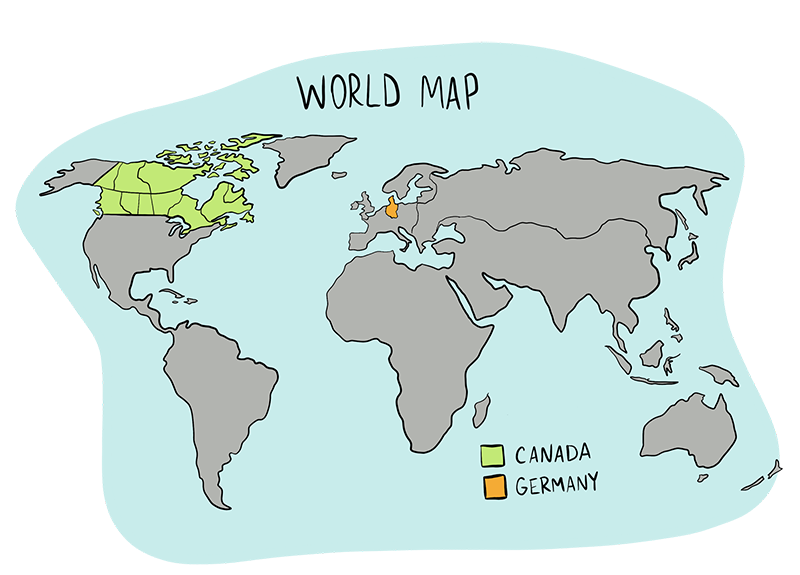
Not all German immigrants travelled from Germany to Canada.
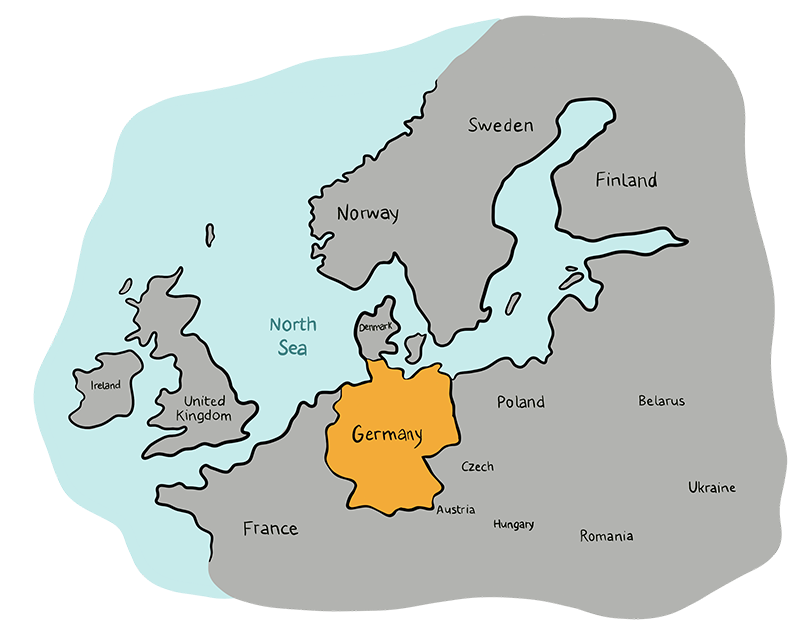
The country of Germany and the surrounding countries.

PHOTO CREDIT: LIBRARY AND ARCHIVES CANADA
This group of German travellers are boarding a train in Hamburg, Germany in 1911 to move to Canada.
In 1916, only about 15,000 residents of the Prairie provinces listed Germany as their country of birth, but around 102,000 people listed German as their language.
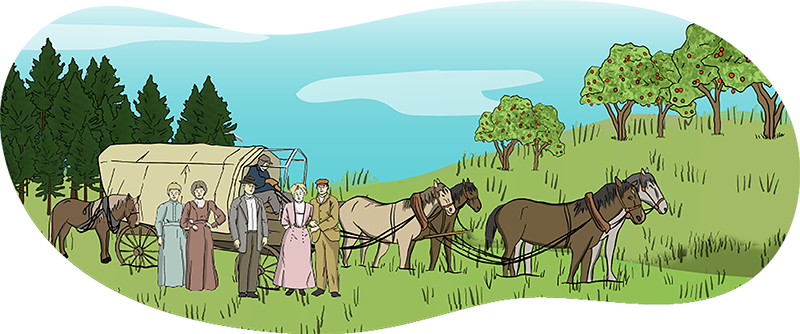
Germans were nervous about the cold climate in Canada, so it was not their first choice to relocate here. The inexpensive, good-quality farmland brought them here though.
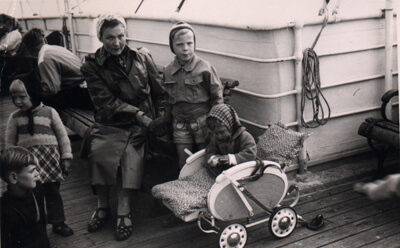
Settlement
When Germans settled in Saskatchewan, they settled in different ways. Some German people formed farming colonies with people from the same home country as them, but practiced different religions. Other Germans formed farming colonies with people from different home countries, but practiced the same religion. Some of these farming settlements were planned and whole colonies would move at once as a group.
Other colonies formed slowly as a chain. A few families immigrated to Saskatchewan and found suitable locations to settle. Then they would send for others to join them in their farming colonies. Other Germans chose to live on their own homesteads and towns in areas that were being settled by a mix of cultural groups.
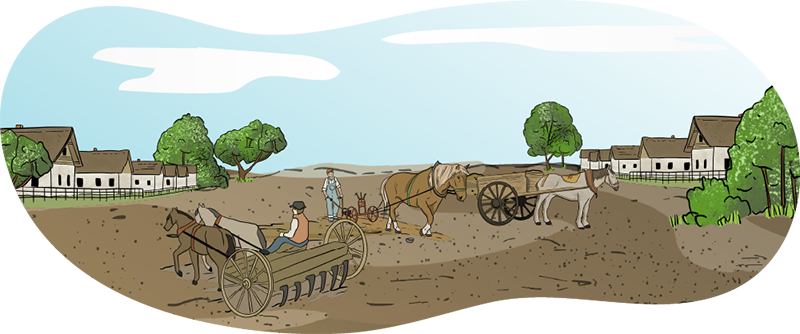
Some Germans settled on colonies, while others moved onto their own homesteads or into towns.
Between 1874 and 1911, 152,000 German speaking settlers arrived in Western Canada. By 1914, there were over 100 German settlements that had been established with the largest being in Rosthern, Wetaskewin, St. Peter’s, and St. Joseph’s. There are German farming colonies around many areas in Saskatchewan.
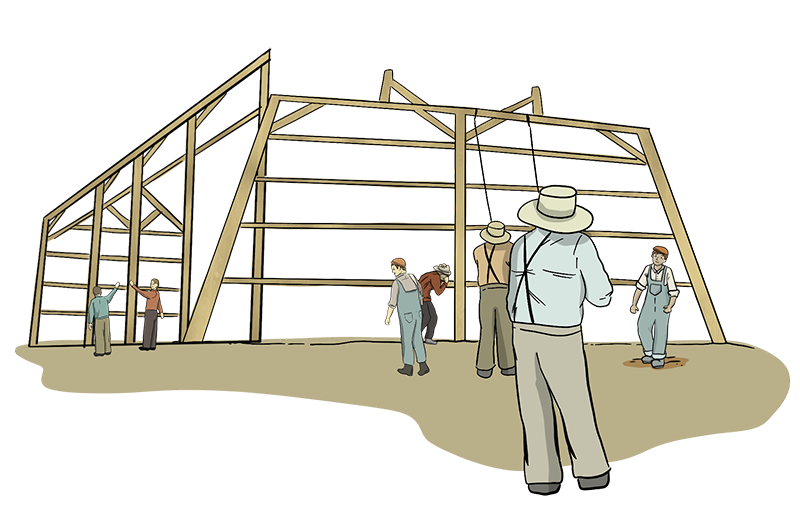
Germans that settled onto colonies worked together to build homesteads.

PHOTO CREDIT: SASKATCHEWAN HISTORY MUSEUM
A German family is breaking soil and bush on their land in 1929 using a tractor and a one-way disc.
When the First World War broke out in 1914, the Canadian government treated many Germans terribly by putting them in prison because they were originally from a country that was at war with Canada. The Germans were described as ‘enemy aliens’ and were put in prisons, concentration camps, and labour camps. After the World War, over 97,000 German speaking people immigrated to Canada from Germany, the Soviet Union, Poland, and Czechoslovakia.
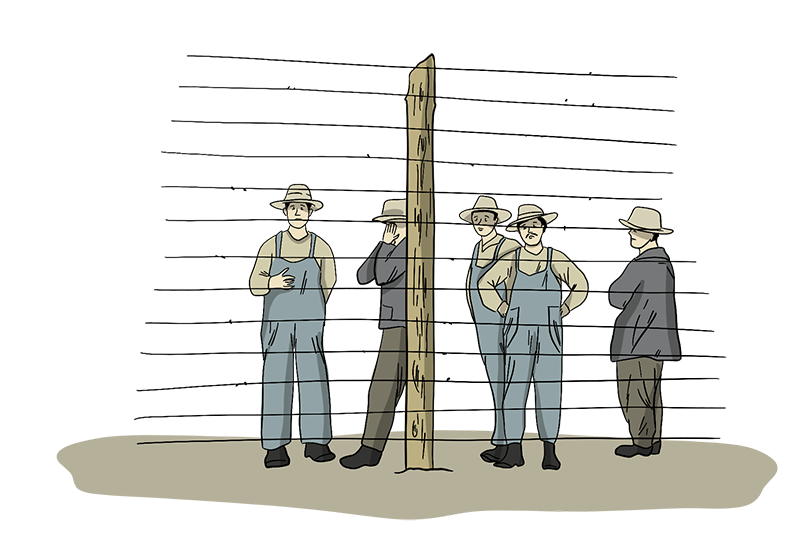
Canada treated Germans terribly because they were originally from a country Canada was at war with.
Culture
German Canadians have played an important role in Canada’s growth. In the early 1900s, most Germans were drawn to Canada because of the large amounts of inexpensive farmland that was available to purchase, and because they wanted to preserve their religious or communal living lifestyle. Germans ended up becoming prominent Canadian entrepreneurs, professionals, artists, music, and tradesmen. Many Germans stay connected to their culture through the German language, religion, social clubs, and music.
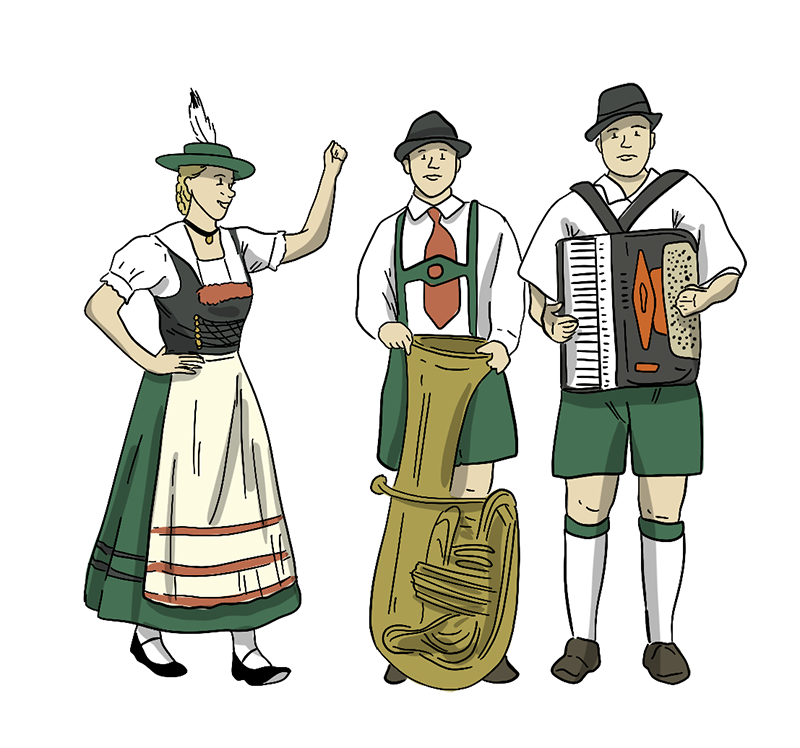
Germans like to stay connected to their culture through music.
Germans are dancing to music and wearing traditional outfits.


